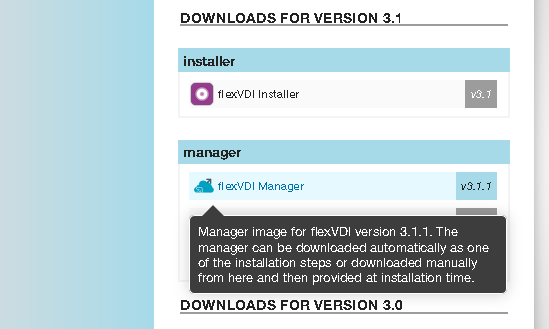Offline server installation and updating
Servers with a direct connection to internet, or which can connect to the internet via an http Proxy can easily be installed and updated, getting software and liceses automatically from our public servers.
Alternatively, installation can be performed too on machines that are isolated from the internet. Most of the installation is the same as described at Getting Started with flexVDI 3.1, but some steps differ.
Getting the server software
flexvdi-installer is not really needed, but it can be useful to run it so that it performs some checks on the server. Its last step, installing software with yum, will fail. This is expected without an internet connection.
Contact support@flexvdi.com They will send you a file with a copy of all the software to be copied to the servers.
Download this flexvdi-3.1-Media.repo file
You have to copy both files to your offline systems, and then run:
cp flexvdi-3.1-Media.repo /etc/yum.repos.d/
mkdir /root/repos
tar -C /root/repos -xvf flexvdi-repo.tgz
After that, you can install flexVDI software with:
yum --enablerepo=flexvdi-media install flexvdi
Getting flexVDI Manager
flexVDI manager images can be downloaded from portal.flexvdi.com
Once the image is copied to one of the servers, it can be installed with the flexvdi-config tool selecting "from file system" instead of "from flexVDI portal".
Getting the license
In common online installations, licenses are requested, downloaded and installed by flexvdi-config tool. In offline installations this require some manual operation.
Once flexVDI manager is up and running, its Manager ID can be get in flexVDI Dashboard, clicking on flexVDI_Manager in the left tree.
Contact support@flexvdi.com, stating your manager ID and your user at portal.flexvdi.com, and they will provide you a license file.
This license file can be copied to the server where flexVDI manager is running, and installed with flexvdi-config, selecting "from file" instead of "from flexVDI portal.

